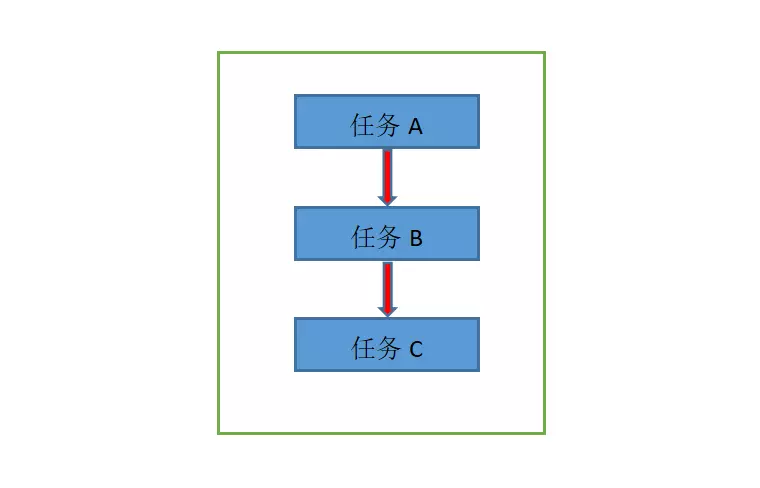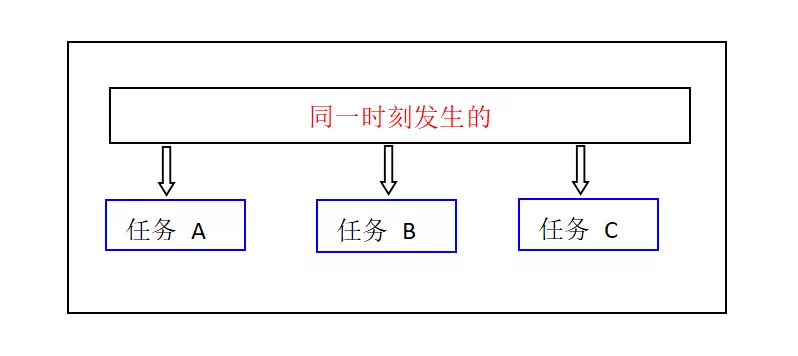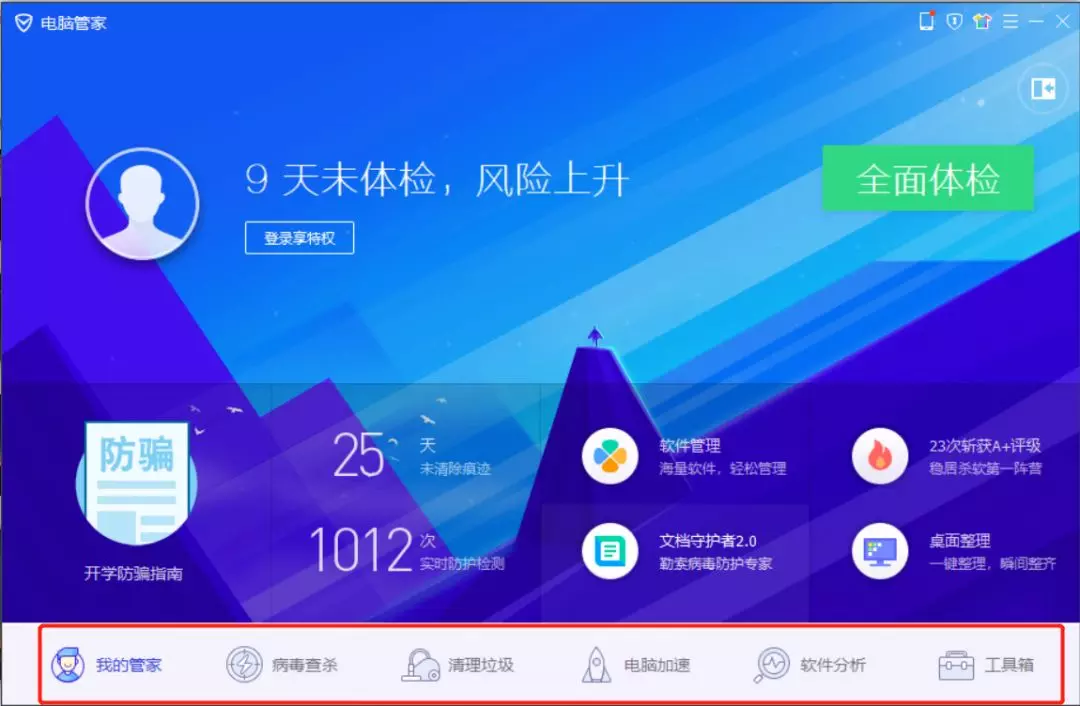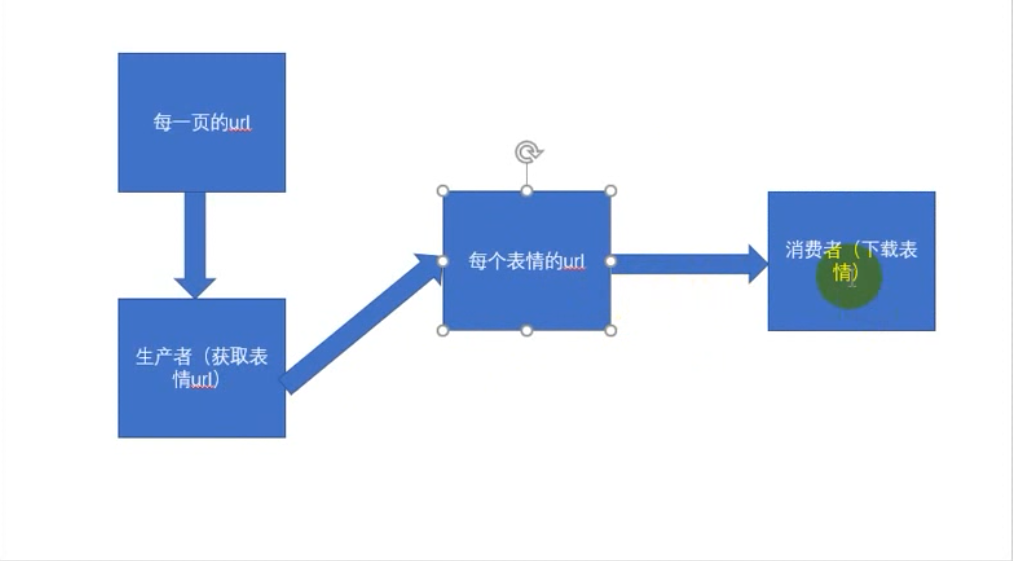1、多线程爬虫
多线程爬虫
有些时候,比如下载图片,因为下载图片的是一个耗时的操作。如果采用之前的那种同步的方式下载。那效率会特别慢。这时候我们就可以考虑使用多线程的方式来下载图片。
多线程介绍:
多线程是为了同步完成多项任务,通过提高资源使用效率来提高系统的效率。线程是在同一时间需要完成多项任务的时候实现。最简单的比喻就像火车的每一节车厢,而进程是火车。车厢里开火车是无法跑动,同理火车也可以有多节车厢。多线程的出现就是为了提高效率。同时它的出现也带来了一些问题。更多请参考: https://baike.baidu.com/item/多线程/1190404?fr=aladdin
那什么是多线程?提到多线程这里要说两个概念,就是串行和并行,搞清楚这个,我们才能更好地理解多线程。
所谓串行,其实是相对于单条线程来执行多个任务来说的,我们就拿下载文件来举个例子:当我们下载多个文件时,在串行中它是按照一定的顺序去进行下载的,也就是说,必须等下载完A之后才能开始下载B,它们在时间上是不可能发生重叠的。

并行:下载多个文件,开启多条线程,多个文件同时进行下载,这里是严格意义上的,在同一时刻发生的,并行在时间上是重叠的。

了解了这两个概念之后,我们再来说说什么是多线程。举个例子,我们打开腾讯管家,腾讯管家本身就是一个程序,也就是说它就是一个进程,它里面有很多的功能,我们可以看下图,能查杀病毒、清理垃圾、电脑加速等众多功能。
按照单线程来说,无论你想要清理垃圾、还是要病毒查杀,那么你必须先做完其中的一件事,才能做下一件事,这里面是有一个执行顺序的。
如果是多线程的话,我们其实在清理垃圾的时候,还可以进行查杀病毒、电脑加速等等其他的操作,这个是严格意义上的同一时刻发生的,没有执行上的先后顺序。

threading模块介绍:
threading 模块是 python 中专门提供用来做多线程的模块。 threading 模块中最常见的类是 Thread ,以下看一个简单的多线程程序:
import threading
import time
def coding():
for x in range(3):
print("%s正在写代码" % x)
time.sleep(1)
def drawing():
for x in range(3):
print("%s正在画画" % x)
time.sleep(1)
def single_thread():
coding()
drawing()
def multi_thread():
# 创建子线程
t1 = threading.Thread(target=coding)
t2 = threading.Thread(target=drawing)
# 执行线程
t1.start()
t2.start()
single_thread()
# >>>0正在写代码
# >>>1正在写代码
# >>>2正在写代码
# >>>0正在画画
# >>>1正在画画
# >>>2正在画画
# 这里一共花了6秒钟
multi_thread()
# >>>0正在写代码
# >>>1正在写代码
# >>>2正在写代码
# >>>0正在画画
# >>>1正在画画
# >>>2正在画画
# 这里一共花了3秒钟
查看线程数:
使用 threading.enumerate( )函数便可以看到当前线程的数量。
查看当前线程的名字:
使用 threading.current_thread( ) 可以看到当前线程的信息。
继承自 threading.Thread 类:
为了让线程代码更好的封装。可以 使用 threading模块下的 Thread 类,继承自这个类,然后实现 run 方法,线程就会自动运行 run 方法中的代码。 示例代码如下:
import threading
import time
class CodingThread(threading.Thread):
def run(self):
for x in range(3):
print("%s正在写代码" % threading.current_thread())
time.sleep(1)
class DrawingThread(threading.Thread):
def run(self):
for x in range(3):
print("%s正在画画" % threading.current_thread())
time.sleep(1)
def multi_thread():
# 创建子线程
t1 = CodingThread()
t2 = DrawingThread()
# 执行线程
t1.start()
t2.start()
multi_thread()
# >>><CodingThread(Thread-1, started 11800)>正在写代码
# >>><DrawingThread(Thread-2, started 9600)>正在画画
# >>><CodingThread(Thread-1, started 11800)>正在写代码
# >>><DrawingThread(Thread-2, started 9600)>正在画画
# >>><DrawingThread(Thread-2, started 9600)>正在画画
# >>><CodingThread(Thread-1, started 11800)>正在写代码
# 这里一共花了3秒钟
多线程共享全局变量-args参数
import threading
import time
def test1(temp):
temp.append(33)
print("-----in test1 temp=%s" % str(temp))
def test2(temp):
print("------in test2 temp=%s" % str(temp))
g_nums = [11, 22]
def main():
# target指定将来 这个线程去哪个函数执行代码
# args指定将来掉用函数的时候传递什么数据过去
t1 = threading.Thread(target=test1, args=(g_nums,))
t2 = threading.Thread(target=test2, args=(g_nums,))
t1.start()
time.sleep(1)
t2.start()
time.sleep(1)
print("----in main Thread g_nums =%s" % str(g_nums))
if __name__ == "__main__":
main()
多线程共享全局变量的问题:
多线程都是在同一进程中运行的。因此在进程中的全局变量所有线程都是可以共享的。这就造成了一个问题,因为线程的执行顺序是无序的。有可能会造成数据错误。比如以下代码:
import threading
tickets = 0
def get_ticket():
global tickets
for x in range(1000000):
tickets += 1
print("tickets:%d" % tickets)
def main():
for x in range(2):
# get_ticket()
t = threading.Thread(target=get_ticket)
t.start()
main()
# 正常的值应该是 1000000,2000000,但是因为多线程运行的不确定性。因此最后的结果可能是随机的。
锁机制:
为了解决以上使用共享全局变量的问题。 threading 提供了一个 Lock类,这个类可以在某个线程访问某个变量的时候枷锁,其他线程就不能进来,直到当前线程完成后,把锁释放了,其他线程才能进来。示例代码如下:
import threading
tickets = 0
gLock = threading.Lock()
def get_ticket():
global tickets
gLock.acquire()
for x in range(1000000):
tickets += 1
gLock.release()
print("tickets:%d" % tickets)
def main():
for x in range(2):
t = threading.Thread(target=get_ticket)
t.start()
main()
# >>>tickets:1000000
# >>>tickets:2000000
Lock版本生产者的消费者模式:
生产者和消费者模式是多线程开发中经常见到的一种模式。生产者的线程是专门用来生产一些数据,然后存放到一个中间的变量中。消费者再从这个变量中取出数据进行消费。但是因为要使用中间变量,中间变量经常是一些全局变量,因此需要使用锁来保证数据完整性。以下是使用 threading.Lock 锁实现的“生产者与消费者模式" 的一个例子:
import threading
import random
import time
gMOney = 1000
gLock = threading.Lock()
# 记录生产者生产的次数,达到十次就不再生产
gTimes = 0
class Producer(threading.Thread):
def run(self):
global gMOney
global gLock
global gTimes
while True:
money = random.randint(100, 1000) # 随机100-1000金额
gLock.acquire()
# 如果已经达到十次了,就不再生产了
if gTimes >= 10:
gLock.release()
break
gMOney += money
print(f"{threading.current_thread()}当前存入{money}元钱,剩余{gMOney}元钱")
gTimes += 1
time.sleep(0.5)
gLock.release()
class Consumer(threading.Thread):
def run(self):
global gMOney
global gLock
global gTimes
while True:
money = random.randint(100, 500) # 随机100-500金额
gLock.acquire()
if gMOney > money:
gMOney -= money
print(f"{threading.current_thread()}当前取出{money}元钱,剩余{gMOney}元钱")
else:
# 如果钱不够了,有可能超过次数了,这时候就要判断一下
print(f"{threading.current_thread()}当前想要出{money}元钱,剩余{gMOney}元钱,不足!")
if gTimes >= 10:
gLock.release()
break
time.sleep(0.5)
gLock.release()
def main():
for x in range(3):
t = Consumer(name="消费者线程%d" % x)
t.start()
for x in range(5):
t = Producer(name="生产者线程%d" % x)
t.start()
main()
condition版生产者与消费者模式:
Lock 版本的生产者与消费者模式可以正常的运行。但是存在一个不足,在消费者中,总是通过 while True 死循环并且上锁的方式去判断钱够不够。上锁是一个很耗费CPU资源的行为。因此这种方法不是最好的。还有一种更好的方式便是使用 threading.Condition 来实现。 threading.Condition 可以在没有数据的时候处于阻塞等待状态。一旦有合适的数据了,还可以使用 notify 相关的函数来通知其他处于等待的线程。这样就不用做一些无用的上锁和解锁的操作。可以提高程序的性能。首先对 threading.Condition 相关的函数做个介绍, threading.Conditon 类似threading.Lock ,可以在修改全局数据的时候进行上锁,也可以在修改完毕之后进行解锁。以下将一些常用的函数做个简单的介绍:
1、 acquire :上锁。
2、release :解锁。
3、wait :将当前线程处于等待状态,并且会释放锁。可以被其他线程使用 notify 和notify_all 函数唤醒。被唤醒后会继续等待上锁,上锁继续执行下面的代码。
4、notify : 通知某个正在等待的线程,默认是第一个等待的线程。
5、notify_all :通知所有正在等待的线程。 notify 和 notify_all 不会释放锁。并且需要在 release之前调用。
Condition 版的生产者与消费者模式代码如下:
import threading
import random
import time
gMOney = 1000
gCondition = threading.Condition()
# 记录生产者生产的次数,达到十次就不再生产
gTimes = 0
class Producer(threading.Thread):
def run(self):
global gMOney
global gLock
global gTimes
while True:
money = random.randint(100, 1000)
gCondition.acquire()
# 如果已经达到十次了,就不再生产了
if gTimes >= 10:
gCondition.release()
break
gMOney += money
print("%s 当前存入%s元钱,剩余%s元钱" % (threading.current_thread(), money, gMOney))
gTimes += 1
gCondition.notify_all()
gCondition.release()
time.sleep(0.5)
class Consumer(threading.Thread):
def run(self):
global gMOney
global gLock
global gTimes
while True:
money = random.randint(100, 500)
gCondition.acquire()
if gMOney < money:
if gTimes >= 10:
gCondition.release()
return
print(
"%s当前想要出%s元钱,剩余%s元钱,不足!"
% (threading.current_thread(), money, gMOney)
)
gCondition.wait()
gMOney -= money
print("%s当前取出%s元钱,剩余%s元钱" % (threading.current_thread(), money, gMOney))
gCondition.release()
time.sleep(0.5)
def main():
for x in range(3):
t = Consumer(name="消费者线程%d" % x)
t.start()
for x in range(5):
t = Producer(name="生产者线程%d" % x)
t.start()
main()
Queue线程安全队列:
在线程中,访问一些全局变量,加锁是一个经常的过程。如果你是想把一些数据储存到某个队列中,那么Python内置了一个线程安全的模块叫做 queue 模块。Python 中的queue模块提供了同步、线程安全的队列,包括FIFO(先进先出)队列Queue,LIFO(后入先出)队列LifoQueue。这些队列都实现了锁原语(可以理解为原子操作,即要么不做,要么都做完),能够在多线程中直接使用。可以使用队列化来实现线程间的同步。相关的函数如下:
1、初始化Queue(maxsize):创建一个先进先出的队列。
2、qsize():返回队列的大小。
3、empty():判断队列是否为空。
4、full():判断队列是否满了。
5、get():从队列中取一个数据。
6、put():将一个数据放到队列中。
from queue import Queue
q = Queue(4)
for x in range(0, 3):
q.put(x)
print(q.qsize())
# >>>3
print(q.full())
# >>>False
for x in range(0, 4):
print(q.get())
# >>>0
# >>>1
# >>>2
from queue import Queue
import time
import threading
def set_value(q):
index = 0
while True:
q.put(index)
index += 1
time.sleep(3)
def get_value(q):
while True:
print(q.get())
def main():
q = Queue(4) # 变量
t1 = threading.Thread(target=set_value, args=[q]) # 添加参数
t2 = threading.Thread(target=get_value, args=[q]) # 添加参数
t1.start()
t2.start()
main()
下载表情包之同步爬虫完成
from lxml import etree
import requests, os, datetime, re
from urllib import request
def parse_page(url):
headers = {
"User-Agent": "Mozilla/5.0 (Windows NT 10.0; Win64; x64;rv:68.0) Gecko/20100101 Firefox/68.0"
}
response = requests.get(url, headers=headers)
text = response.text
# print(text)
html = etree.HTML(text)
imgs = html.xpath("//div[@class='page-content text-center']//img[@class!='gif']")
# print(imgs)
for img in imgs:
img_url = img.get("data-original")
alt = img.get("alt")
alt = re.sub(r"[\??\.,。!!]", "", alt)
# print(img_url,alt)
suffix = os.path.splitext(img_url)[1]
filename = alt + suffix
# print(filename)
request.urlretrieve(img_url, "images/" + filename)
def main():
start = datetime.datetime.now().replace(microsecond=0)
for x in range(1, 5):
url = "https://www.doutula.com/photo/list/?page=%d" % x
parse_page(url)
end = datetime.datetime.now().replace(microsecond=0)
print("耗时: %s" % (end - start))
main()
使用生产者与消费者模式多线程下载表情包:

import threading, requests, os, re, datetime
from lxml import etree
from urllib import request
from queue import Queue
class Producer(threading.Thread):
headers = {
"User-Agent": "Mozilla/5.0 (Windows NT 10.0; Win64; x64;rv:68.0) Gecko/20100101 Firefox/68.0"
}
def __init__(self, page_queue, img_queue, *args, **kwargs):
super(Producer, self).__init__(*args, **kwargs)
self.page_queue = page_queue
self.img_queue = img_queue
def run(self):
while True:
if self.page_queue.empty():
break
url = self.page_queue.get()
self.parse_page(url)
def parse_page(self, url):
response = requests.get(url, headers=self.headers)
text = response.text
# print(text)
html = etree.HTML(text)
imgs = html.xpath(
"//div[@class='page-content text-center']//img[@class!='gif']"
)
# print(imgs)
for img in imgs:
img_url = img.get("data-original")
alt = img.get("alt")
alt = re.sub(r"[\??\.,。!!]", "", alt)
# print(img_url,alt)
suffix = os.path.splitext(img_url)[1]
filename = alt + suffix
# print(img_url,alt)
self.img_queue.put((img_url, filename))
class Consumer(threading.Thread):
def __init__(self, page_queue, img_queue, *args, **kwargs):
super(Consumer, self).__init__(*args, **kwargs)
self.page_queue = page_queue
self.img_queue = img_queue
def run(self):
while True:
if self.img_queue.empty() and self.page_queue.empty():
break
img_url, filename = self.img_queue.get()
# print(img_url,filename)
request.urlretrieve(img_url, "images2/" + filename)
print(filename + "下载完成")
def main():
start = datetime.datetime.now().replace(microsecond=0)
page_queue = Queue(100)
img_queue = Queue(1000)
for x in range(1, 21):
url = "https://www.doutula.com/photo/list/?page=%d" % x
page_queue.put(url)
for x in range(5):
t = Producer(page_queue, img_queue)
t.start()
for x in range(5):
t = Consumer(page_queue, img_queue)
t.start()
end = datetime.datetime.now().replace(microsecond=0)
print("耗时: %s" % (end - start))
main()
GIL全局解释器锁:
Python自带的解释器是 CPython。 CPython解释器的多线程实际上是一个假的多线程(在多核CPU中,只能利用一核,不能利用多核)。同一时刻只有一个线程在执行,为了保证同一时刻只有一个线程在执行,在 CPython解释器中有一个东西叫做 GIL,叫做全局解释器锁。这个解释器锁是有必要的。因为 CPython解释器的内存管理不是线程安全。当然除了 CPython解释器,还有其他解释器,有些解释器是没有 GIL锁的,见下面:
1、Jython :用Java实现的Python解释器。不存在GIL锁。更多详情请见:百度百科
2、IronPython :用 .net 实现的Python解释器,不存在GIl 锁。更多详情请见:百度百科
3、PyPy:用 Python 实现的Python解释器。存在GIL锁。更多详情请见:百度百科
GIL虽然是一个假的多线程。但是在处理一些IO操作(比如文件读写和网络请求)还是可以很大程度上提高效率的。在IO操作上建议使用多线程提高效率。在一些CPU计算操作上不建议使用多线程,而建议使用多进程。
多线程下载百思不得姐段子作业:
import requests, threading, csv
from lxml import etree
from queue import Queue
class BSSpider(threading.Thread):
headers = {
"User-Agent": "Mozilla/5.0 (Windows NT 10.0; Win64; x64;rv:68.0) Gecko/20100101 Firefox/68.0"
}
def __init__(self, page_queue, joke_queue, *args, **kwargs):
super(BSSpider, self).__init__(*args, **kwargs)
self.base_domain = "http://www.budejie.com"
self.page_queue = page_queue
self.joke_queue = joke_queue
def run(self):
while True:
if self.page_queue.empty():
break
url = self.page_queue.get()
response = requests.get(url, headers=self.headers)
text = response.text
html = etree.HTML(text)
descs = html.xpath("//div[@class='j-r-list-c-desc']")
for desc in descs:
jokes = desc.xpath(".//text()")
joke = "\n".join(jokes).strip()
# print(joke,'\n')
link = self.base_domain + desc.xpath(".//a/@href")[0]
# print(joke,link)
self.joke_queue.put((joke, link))
print("=" * 30 + "第%s页下载完成" % url.split("/")[-1] + "=" * 30)
class BSWriter(threading.Thread):
headers = {
"User-Agent": "Mozilla/5.0 (Windows NT 10.0; Win64; x64;rv:68.0) Gecko/20100101 Firefox/68.0"
}
def __init__(self, joke_queue, writer, gLock, *args, **kwargs):
super(BSWriter, self).__init__(*args, **kwargs)
self.joke_queue = joke_queue
self.writer = writer
self.lock = gLock
def run(self):
while True:
try:
joke_info = self.joke_queue.get(timeout=40)
joke, link = joke_info
# print(joke_info)
self.lock.acquire()
self.writer.writerow((joke, link))
self.lock.release()
print("保存一条")
except:
break
def main():
page_queue = Queue(10)
joke_queue = Queue(500)
gLock = threading.Lock()
fp = open("bsbdqj.csv", "a", newline="", encoding="utf-8")
writer = csv.writer(fp)
writer.writerow(("content", "link"))
for x in range(1, 11):
url = "http://www.budejie.com/text/%d" % x
page_queue.put(url)
for x in range(5):
t = BSSpider(page_queue, joke_queue)
t.start()
for x in range(5):
t = BSWriter(joke_queue, writer, gLock)
t.start()
main()



 浙公网安备 33010602011771号
浙公网安备 33010602011771号